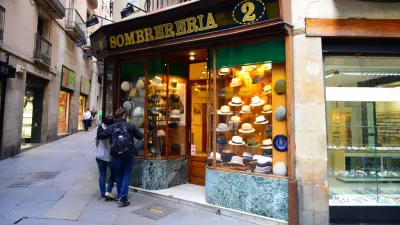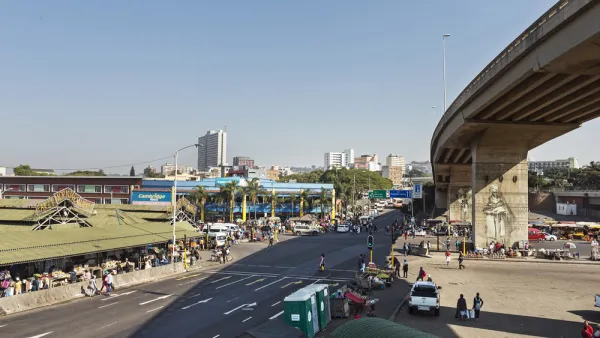Writing in The Atlantic Cities, Chuck Wolfe provides ten illustrated examples of enjoyable environments that reflect an evolving recognition for the qualitative aspects of the urban experience.

Wolfe notes how several post-Recession projects focus sustainability goals on the end-user experience, rather than simply pursue flagship "green" designations. He suggests this qualitative approach remain a lynchpin of evolving urbanism, and suggests emotional "bookmarks" of experiences in cities around the world, which generally recall modern expressions of traditional urban life.
He offers illustrations of ten exemplary "bookmarks" as a useful summary of evolving human experience in the city, from wood-framed storefronts to natural-seeming water features, commercial porches and more. A particular example is a shopping street full of people:
Debates about density often lack a rich visual record of active, close-knit community. In this case, a shopping day crowd fills city spaces in a comfortable way, consistent with local culture. While not adaptable to all cities without permanent or scheduled pedestrian uses of rights-of-way, this example shows dynamic potential of which many are not otherwise aware.
FULL STORY: Picturing 10 Urban Qualities Every City Should Have

National Parks Layoffs Will Cause Communities to Lose Billions
Thousands of essential park workers were laid off this week, just before the busy spring break season.

Retro-silient?: America’s First “Eco-burb,” The Woodlands Turns 50
A master-planned community north of Houston offers lessons on green infrastructure and resilient design, but falls short of its founder’s lofty affordability and walkability goals.

Delivering for America Plan Will Downgrade Mail Service in at Least 49.5 Percent of Zip Codes
Republican and Democrat lawmakers criticize the plan for its disproportionate negative impact on rural communities.

Test News Post 1
This is a summary

Test News Headline 46
Test for the image on the front page.

Balancing Bombs and Butterflies: How the National Guard Protects a Rare Species
The National Guard at Fort Indiantown Gap uses GIS technology and land management strategies to balance military training with conservation efforts, ensuring the survival of the rare eastern regal fritillary butterfly.
Urban Design for Planners 1: Software Tools
This six-course series explores essential urban design concepts using open source software and equips planners with the tools they need to participate fully in the urban design process.
Planning for Universal Design
Learn the tools for implementing Universal Design in planning regulations.
EMC Planning Group, Inc.
Planetizen
Planetizen
Mpact (formerly Rail~Volution)
Great Falls Development Authority, Inc.
HUDs Office of Policy Development and Research
NYU Wagner Graduate School of Public Service





























